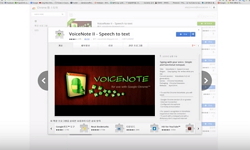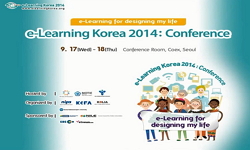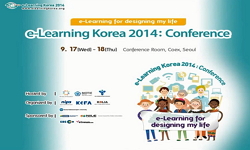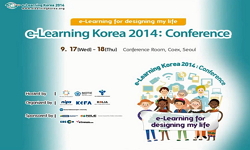이러닝으로 대변되는 디지털 환경에서는 전자 매체의 물리적인 한계, 다양한 멀티미디어 자료들의 활용, 코스웨어 개념의 등장 등 다각적인 현상과 요인들로 인하여, 대다수의 텍스트가 역...
http://chineseinput.net/에서 pinyin(병음)방식으로 중국어를 변환할 수 있습니다.
변환된 중국어를 복사하여 사용하시면 됩니다.
- 中文 을 입력하시려면 zhongwen을 입력하시고 space를누르시면됩니다.
- 北京 을 입력하시려면 beijing을 입력하시고 space를 누르시면 됩니다.
뇌 인지발달구조 원리에 기반한 이러닝 학습환경에서의 텍스트 축약(縮約)에 관한 연구 = A Study on the Text Reduction based on Principles of Cognitive Structure in E-Learning Environment
한글로보기https://www.riss.kr/link?id=A75544213
- 저자
- 발행기관
- 학술지명
- 권호사항
-
발행연도
2006
-
작성언어
-
-
주제어
이러닝 ; 텍스트 축약 ; 인지구조 ; 텍스트 요약 ; 텍스트 ; 전자 텍스트 ; e-Learning ; text reduction ; cognitive structure ; text summarization ; text ; electronic text
-
KDC
511
-
자료형태
학술저널
- 발행기관 URL
-
수록면
99-127(29쪽)
- 제공처
- 소장기관
-
0
상세조회 -
0
다운로드
부가정보
국문 초록 (Abstract)
이러닝으로 대변되는 디지털 환경에서는 전자 매체의 물리적인 한계, 다양한 멀티미디어 자료들의 활용, 코스웨어 개념의 등장 등 다각적인 현상과 요인들로 인하여, 대다수의 텍스트가 역동적인 형태로 변형되고 의미가 요약되는 ``축약(reduction)``의 과정을 거치게 된다. 문제는, 이러한 과정에 대한 처방적 설계 전략은 물론 기초적 현상과 과정을 규명한 연구들을 매우 찾아보기 어렵다는 점이다. 이와 같은 문제의식과 연구의 필요성을 토대로, 이 연구는 뇌 인지구조(schema) 이론에 근거하여 선정된 텍스트 구조의 다섯 가지 유형을 선정하고, 이러한 다섯 가지 텍스트를 대상으로 이루어진 이러닝 텍스트의 축소 및 요약의 과정을 규명함으로써 축약에 대한 기초 이론을 정립하고 전략적 시사점을 도출해내기 위하여 수행되었다. 구체적인 연구 주제로서 1) 축약의 주요 활동, 2) 활동의 절차, 3) 축약의 투입·결과물 변형 양상의 세 가지를 상정하였다. 주요 연구 문제를 해결하기 위해, 10인의 이러닝 설계·개발 전문가들을 연구 대상으로 선정하여 기본적인 축약 사고 활동을 관찰하기 위한 사고 구술(think-aloud) 자료를 수집하였다. 실제 사고 관찰 자료를 주요 대상으로 하고, 선행 연구의 주요 개념들을 참조하여 최종 축약 활동에 대한 이론의 틀을 확정짓는 방법으로 문제에 대한 답을 모색했다. 먼저, 수집된 구술 자료를 분석하여 축약 활동 및 코딩 체계를 추출하기 위한 방법으로 Guba와 Lincoln(1985)의 단위화와 범주화 기법, Holsti(1969)의 범주 정리 규칙을 활용하였다. 그 결과물로서 11가지 활동 국면, 22가지 주요 과제, 과제별 총 50가지의 세부 수행 활동들과 최종 코딩 체계가 확정되었다. 확정된 결과물 중 핵심적인 것들을 파악함으로써 가장 유의미한 활동들을 추려내고, 아울러 활동간 관계와 절차를 구체적으로 알아보기 위해, 코딩 체계를 활용하여 피험자들의 활동을 에피소드(episode) 단위 활동으로 분류한 후 이에 대한 축약 활동 빈도·시간소요량·절차에 대한 통계적 분석 및 피험자 사후 보충 면접을 실시하였다. 마지막으로, 투입 요소 및 산출 요소를 비교하여 축약물의 변형 양상을 분석했다. 분석 결과, 축약의 과정은 크게 나누어 내용 및 단서에 해당되는 ``투입 활동(input)``, 축약 과정이 본격적으로 일어나는 ``활동 절차(process)``, 그리고 이러한 절차를 거쳐 시각적·언어적 요소들이 통합된 복합적 축약물을 만드는 ``산출(output)``의 국면으로 구조화되었다. 투입 활동에는 ``축약자 단서``와 ``텍스트 단서``, ``축약의 목표 및 용도``, 그리고 ``축약의 기술 및 도구``가 주요한 역할을 한 것으로 나타났으며, 산출물은 시각적 정보의 증가와 언어적 정보의 감소, 그리고 이러닝 기능을 통합하는 경향을 보였다. 주요 국면의 하위에 포함되는 활동의 내용과 절차는 총 11가지로서, ``인식 및 분석``, ``선택``, ``일반화``, ``원형 생성``, ``구조화``, ``정교화``, ``시각화 및 통합``, ``시각적 확장``, ``결과물 정련``, ``결과물 수정 및 보완``, ``정교화·성찰·반복 전략의 활용`` 등으로 구체화되었다. 본 연구의 결과는 뇌 인지구조 이론에 기반한 텍스트 축약 활동 내용, 활동의 절차, 축약 투입·결과물에 대한 구체적인 논의를 포함한 기초 이론과 이에 따른 전략적 시사점을 제공한다는 측면에서 의의를 가질 수 있을 것이다. 결과의 분석 및 논의에 근거하여 연구의 한계점과 관련된 몇 가지 후속 연구가 제
다국어 초록 (Multilingual Abstract)
This study is an attempt to establish the theoretical framework for text reduction based on principles of cognitive structure in e-learning environment. To investigate the text reduction process, three major research themes were explored: 1) major red...
This study is an attempt to establish the theoretical framework for text reduction based on principles of cognitive structure in e-learning environment. To investigate the text reduction process, three major research themes were explored: 1) major reduction activities, 2) procedures of the reduction activities and 3) patterns of the transformation in the output of reduced text. The subjects were 10 expert volunteers who are designing e-learning contents. Data were collected through method of think-aloud during text reduction activities, over the period of two months, in either computer lab or subjects` own house. In order to establish a framework to analyze main activities and procedures, a coding scheme were developed based on the think-aloud data. Using the coding scheme, the main activities and procedures were drawn from the think-aloud protocols. The reduction results such as input and output elements were analyzed and finally they were integrated into the theoretical framework for text reduction. The results show that the overall text reduction can be structured into roughly three phases: 1) input phase, which is the starting point and where the cues are fed, 2) process phase, where the reduction process actually take place, and 3) output phase, where the visual/verbal elements combine to produce complex reduction result. Observation results show that text cues, reader cues, purpose of text reduction and reduction technology/tools play a major part during the input phase. In the output phase, visual data increase dramatically, verbal information decreases, and the technically available elements were integrated. The specific elements in the sub-phase of process include major activities and procedure as follows: Schematizing and Analysis, Selection of Main Idea, Prototype Development, Development of General Concepts and Propositions, Structuring Main Contents Frames, Elaboration, Integrating visual and language elements, Integrating E-learning Functions, Aesthetic Design and Refinement, Modification, and Utilizing Elaboration, Reflection and Repetition Strategies. The results indicate that in the earlier part of the whole text reduction, those activities that help understand the content take up major portion of time and effort, and in the later part, visualization and refinement activities dominate the process. The strategies for understanding, summarization and visualization seemed to be applied throughout the entire duration of the activity. Structuring main contents frames, an activity seldom found in the literature of text summarization, was prominent in the summarizing process. Elaboration occurred in terms of visual and multi-media aspects, as opposed to subject matter elaboration. Also, the process of text comprehension and summarization occurred in both bottom-up and top-down styles, according to the subject`s text reduction strategies. The study discusses possibility of establishing basic theory on text reduction and it suggests a conceptual model of text redction procedure along with the text understanding, summarization and visualization strategies for the text reduction in e-learning environment. Seven specific recommendations for future research were suggested.
동일학술지(권/호) 다른 논문
-
- 국제뇌교육종합대학원대학교 뇌교육연구소
- 이승헌
- 2006
-
- 국제뇌교육종합대학원대학교 뇌교육연구소
- 권효숙 ( Hyo Sook Kwon )
- 2006
-
- 국제뇌교육종합대학원대학교 뇌교육연구소
- 신혜숙 ( Hye Sook Shin )
- 2006
-
- 국제뇌교육종합대학원대학교 뇌교육연구소
- 최지영 ( Ji Young Choi )
- 2006
분석정보
연관 공개강의(KOCW)
-

음성을 텍스트로 자동 타이핑해주는 Speech to text 활용법
신한대학교 신종우 -

2014 이러닝 국제 콘퍼런스 : Developing the PETAL e-Learning Platform~
한국교육정보진흥협회 Vincent Tam -

2014 이러닝 국제 콘퍼런스 : Understand Seniors’ Motivation in e-Learning through
한국교육정보진흥협회 Thomas Kuan -

2014 이러닝 국제 콘퍼런스: Analysis of e-Learning Program Management for Adults in Korea
한국교육정보진흥협회 Don-Min, Choi -

텍스트데이터 빅데이터 분석
부산디지털대학교 서지윤




 RISS
RISS KISS
KISS


